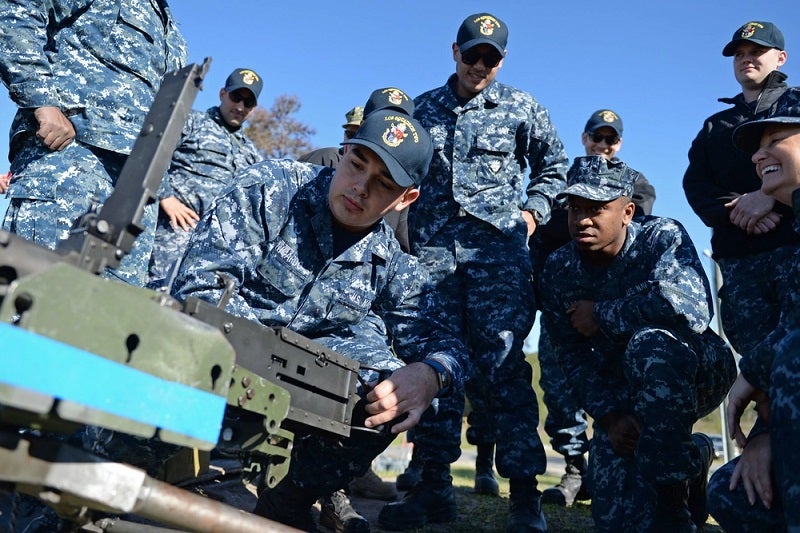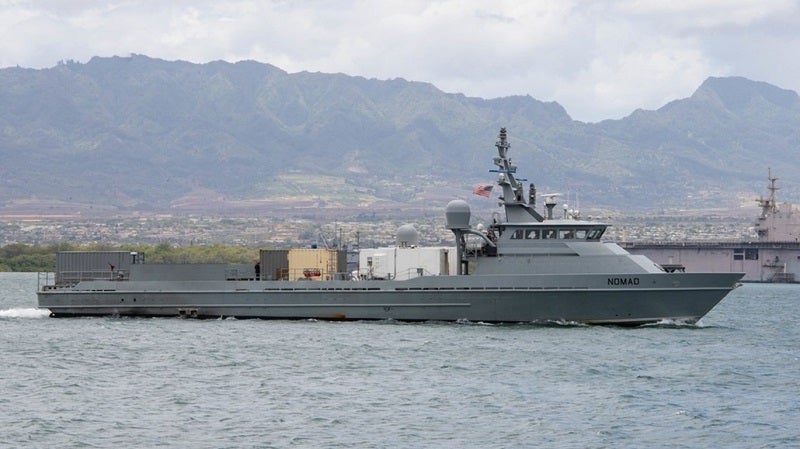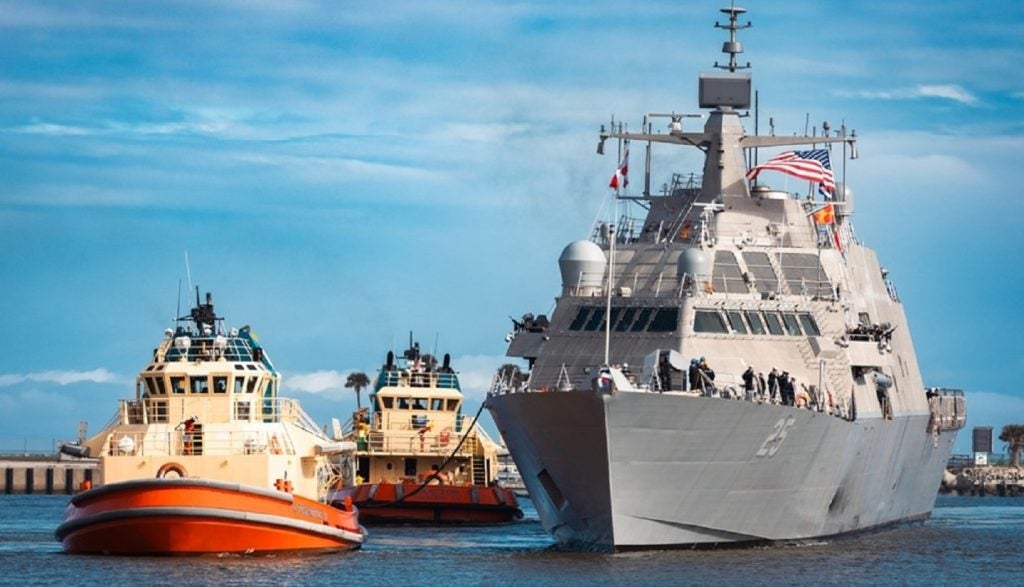The US Navy made its latest move in a long-standing policy of keeping its Littoral Combat Ships (LCS) running at a time of need.
As the original equipment manufacturer of the Freedom class LCS – one of two hull designs – Lockheed Martin gained an $8.1m modification contract on 16 February 2024 to perform combat system ship integration services and test them on the warships as well as the US Navy’s Large Uncrewed Surface Vessels (LUSVs).
All parties expect the work to be completed by February 2025.
Naval Technology has approached Lockheed Martin for details about the modification; the contractor says it is currently pursuing US Government approval to authorise the release of the information.
Reduction of the LCS fleet
There are two LCS designs: Lockheed Martin’s Freedom class is a high-speed, semi-planing mono-hull, while the General Dynamics Independence class design is a trimaran with a slender stabilised mono-hull.
Originally, the US Navy hoped to operate 32 LCS units, however the service has reduced the fleet to 23 ships.
The LCS programme represents a reduction in time to acquire, design, and build ships in comparison to any previous ship class. A total of 11 Freedom vessels are currently commissioned and 14 commissioned Independence commbatants. FY 2019 was the final year programmed for LCS seaframes.
The original number of LCSs have fallen, with seven ships retiring over the next three years in addition to the four retired in 2023; all of the ships to be retired would be less than 10-years-old.
The last LCS to be christened was the Freedom-class vessel USS Cleveland (LCS 31) in April last year, which the Navy says is currently in the “pre-production phase”. Whereas, the last LCS to be commissioned was another Freedom-class vessel, the USS Marinette (LCS 25), in mid-September 2023, which has been delivered to the Navy and is currently based in Mayport, Florida.
Changing focus in LCS sustainment
In the second half of 2023, Northrop Grumman, acting as a subcontractor, was tasked with sustaining the mission modules (MMs) for the LCS fleet as a whole. MMs are systems that provide specific capabilities to the LCS, including vehicles, sensors and weapons.
The Navy will use LCS MMs to counter a range of surface and undersea warfare capabilities – for which GlobalData indicates substantial growth in these defence markets.

Now, Lockheed’s modification will look more broadly at the combat system in which all the MMs are integrated. The specific work to be done currently remains undisclosed, pending Government authorisation.
Integrating the US Navy’s LUSVs
Lockheed Martin’s work also extends to the combat systems for the Navy’s Large LUSVs.
Just as autonomy has touched on many other sectors of defence, so too has it impacted the maritime domain, where the concept for a future manned-unmanned ‘Hybrid Fleet’ is catching on.

The leading intelligence consultancy, GlobalData, projects the value of the global USV market to reach $3.16bn in 2033, up from $894m in 2023. Demand for military USVs is driven by many of the same factors as for uncrewed underwater vehicles, with autonomous mine-countermeasure capabilities and hybrid fleet structures driving demand for USV platforms around the globe.
In late December 2023, the US Navy successfully completed a milestone “no touch” 720-hour continuous power demonstration of a diesel generator for USV operations. During the demonstration phase, no human intervention and no preventative or corrective maintenance on the equipment was allowed.









